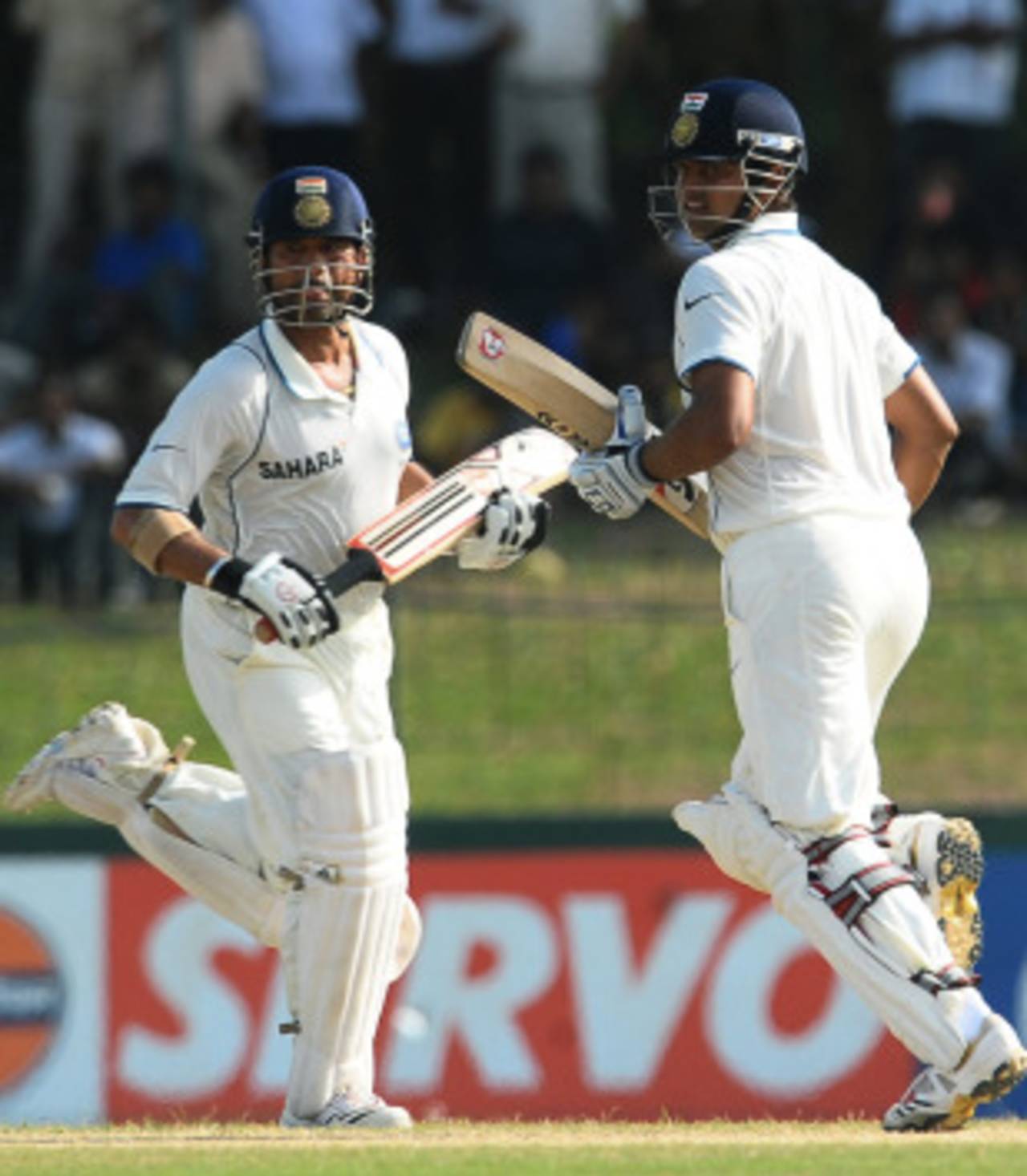Had Chuck Norris been here in Colombo, even he would have been reduced to praying - for rain - so that this match would get over without the torture of a pointless final day. Not even the roundhouse kick would have worked on the batsmen. The final day of this mismatch between bat and ball - when Ishant Sharma and Pragyan Ojha batted out almost a session - is not a fair indication because the bowlers had no motivation to bowl by then, but enough happened in the first four days to suggest that this SSC track was not fit for Test cricket.
From Sachin Tendulkar to MS Dhoni to Pragyan Ojha to Kumar Sangakkara to Trevor Bayliss, all have expressed displeasure with the pitch that yielded just 17 wickets over five days, and most of them thanks to silly or tired shots. The only time there was a contest between bat and ball was when India had dug themselves a hole by losing three quick wickets on the third day, but Tendulkar and debutant Suresh Raina saw them through that without much trouble.
The irony, though, is that in all likelihood this track won't even be termed 'poor'. A poor pitch, according to the ICC, is one that provides excessive seam or spin, excessively uneven bounce, or one that displays limited carry, low bounce and no seam movement or turn at any stage in the match.
Of course the pitch provided turn, but only on the fourth afternoon and fifth day, which should be enough to keep it out of the 'poor' bracket unless the match referee Andy Pycroft takes a stern subjective stand. For by the time that turn arrived, the batsmen had plundered the helpless bowlers into oblivion, and the Test as a contest had lost all life. By the time the pitch started interesting the bowlers, those poor souls knew there wouldn't be a result, no matter how hard they tried.
There was a time when such Test matches were tolerated. That time has passed. The public pays good money for the cricket, and it wants a good, even contest. On the other hand, the administrators want as many matches as possible to go to five days so that TV channels get their money's worth. To say that runs are coming at four an over as an explanation is to underestimate the fan's intelligence.
When neither of the teams wants to be on the field on the final day, you know the pitch has been a disaster. "We would love to [call off such games earlier]," MS Dhoni said. "If we can get an extra day off, why not? It can be one of the options. They may decide if you have played one innings each and it's the last day and if there is nothing happening, why waste time? If the wicket is like this, it gets really tough. So may be we should call it off and go for some nice food and drinks." The Ten Sports cameramen, who slogged it out in the sun to cover today's 'anti-cricket' would have approved.
Kumar Sangakkara, always the sensible man, brought up a more pertinent issue. "I don't know how the sponsors and the TV networks will look at that," Sangakkara said. "It was not the most interesting final day's play. Until ICC changes the rule, you have to wait and see."
The pitch provides an interesting threat, and hopefully is not the start of a trend. In the nineties, the Sri Lankan pitches were not known much for producing results, but as Muttiah Muralitharan started growing as a bowler, Sri Lanka grew in confidence, and started producing result-oriented pitches. Sri Lanka hosted 20 draws out of 42 before 2000, and only 11 out of 54 since, a result rate behind only that of Australia and South Africa. Now, with Murali gone, are Sri Lanka going to play safe again?
Sangakkara suggests it is the inherent nature of the SSC, and we might be reading too much into it. "The crowds like to see an even contest between bat and ball," he said. "Unfortunately that wasn't the case in this Test match. The wicket at SSC has been always flat. I remember when we played against Pakistan, we had to bat out about five sessions to save the Test match and at the end we were 391 for four."
The P Sara Oval, where the next Test will be held, is known to produce results. Two years ago, India lost three wickets in the first session and the match inside four days. Pakistan, last year, lost six wickets in the first session, and the match in three days. Now Sri Lanka go into the match with a 1-0 lead to defend, and no added
incentive of becoming No. 1 if they win the match. How the track at the P Sara behaves will reveal a lot about their mindset post Murali.
Sidharth Monga is a staff writer at Cricinfo
